2 Answers
It isn't directly related to radiation hardening, it is related to the packaging. Rad-hard and other high-reliability parts often come in flat packs. The user is expected to form (bend) and trim the leads as needed for their application. Long leads allow more flexibility (options).
- 13,638
- 1
- 19
- 43
-
12For example flipping the IC upside-down to put it into a milling, and save some height. – Janka Jun 08 '19 at 09:24
-
3I think it's also to literally add flexibility. The long leads act as springs to prevent damage as the board flexes due to vibration and high acceleration. – user71659 Jun 08 '19 at 18:38
-
10@user71659 - I worked in the space industry for most of my career and routinely used these types of parts. In the early days of flatpacks, they were often soldered without severe bends or cutting the leads, they were just bent slightly, just enough to reach the board. In modern times, they are usually bent and cut so they resemble a SOIC or similar package. Each company that designs/assembles boards will have a standard bend pattern for each package. But, if the vibration environment was especially severe, the ME may ask for a custom longer bend pattern. So, I partially agree with you. – Mattman944 Jun 08 '19 at 19:11
-
1There's also the fact that longer leads will be better heatsinks - which may be useful both in application or even just during the soldering process. – UKMonkey Jun 10 '19 at 12:35
-
I think it may also relate to testing. Hi-rel parts get tested many times, and the extra lead length provides an area for test connections that can be used multiple times (and then trimmed off) without compromising the area that will be soldered (or even welded) in the final assembly. – Dave Tweed Jan 18 '22 at 15:20
Taking the example of the chip in your picture (RHFAC14A - datasheet,) they aren't always in the flat package with long leads (FPC-14.) They are also available in DILC-14, which looks more like a standard DIP-14.
So, the flat, long leaded style isn't a requirement of the radiation hardening.
Wikipedia says that type of package is known as a "flatpack" and that it is a package specified for the United States military.
And, there's your explanation for why radiation hardened parts often come in flatpacks: The US military is one of the larger (if not largest) purchasers of radiation hardened parts. You get a lot of parts made to meet that standard just because the US military is one of the biggest customers for that kind of thing.
As well, they've been making the "flatpacks" since 1962. Those are surface mounted parts that have been around longer than there was any real market for surface mounted parts. Anybody who has been building small devices since before SMDs became a standard thing would have likely had to use the flatpack devices if they needed surface mount style parts.
- 67,678
- 8
- 104
- 179
-
Interestingly, Flatpack is even older than DIP, it was invented in 1962, DIP came to existence in 1964. So, to the military the flatpack package is a basic choice, just like DIP is the basic choice for through-hole chips to the rest of us. – 比尔盖子 Feb 13 '20 at 05:02
